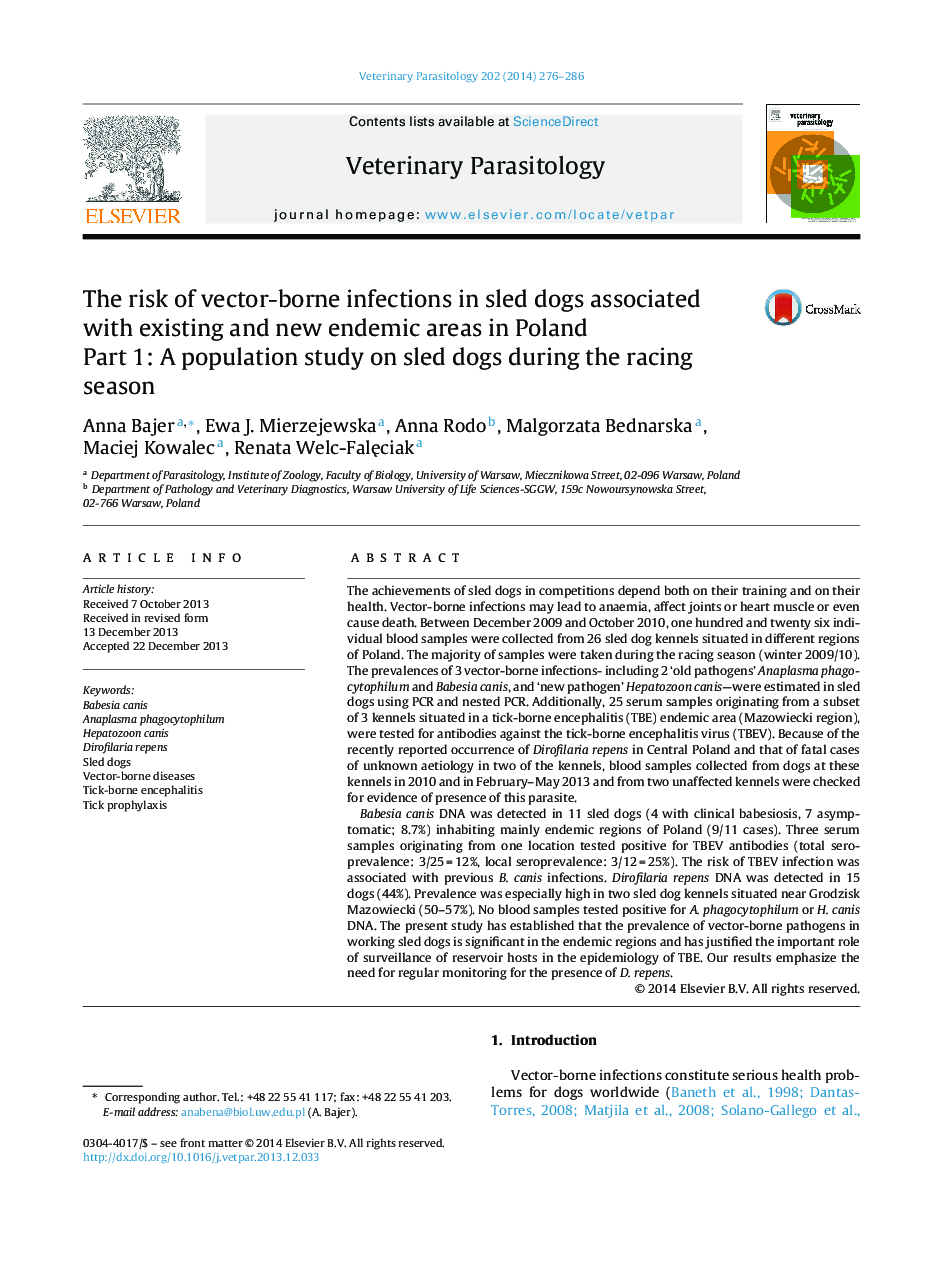| کد مقاله | کد نشریه | سال انتشار | مقاله انگلیسی | نسخه تمام متن |
|---|---|---|---|---|
| 5803005 | 1555686 | 2014 | 11 صفحه PDF | دانلود رایگان |
The achievements of sled dogs in competitions depend both on their training and on their health. Vector-borne infections may lead to anaemia, affect joints or heart muscle or even cause death. Between December 2009 and October 2010, one hundred and twenty six individual blood samples were collected from 26 sled dog kennels situated in different regions of Poland. The majority of samples were taken during the racing season (winter 2009/10). The prevalences of 3 vector-borne infections- including 2 'old pathogens' Anaplasma phagocytophilum and Babesia canis, and 'new pathogen' Hepatozoon canis-were estimated in sled dogs using PCR and nested PCR. Additionally, 25 serum samples originating from a subset of 3 kennels situated in a tick-borne encephalitis (TBE) endemic area (Mazowiecki region), were tested for antibodies against the tick-borne encephalitis virus (TBEV). Because of the recently reported occurrence of Dirofilaria repens in Central Poland and that of fatal cases of unknown aetiology in two of the kennels, blood samples collected from dogs at these kennels in 2010 and in February-May 2013 and from two unaffected kennels were checked for evidence of presence of this parasite.Babesia canis DNA was detected in 11 sled dogs (4 with clinical babesiosis, 7 asymptomatic; 8.7%) inhabiting mainly endemic regions of Poland (9/11 cases). Three serum samples originating from one location tested positive for TBEV antibodies (total seroprevalence: 3/25Â =Â 12%, local seroprevalence: 3/12Â =Â 25%). The risk of TBEV infection was associated with previous B. canis infections. Dirofilaria repens DNA was detected in 15 dogs (44%). Prevalence was especially high in two sled dog kennels situated near Grodzisk Mazowiecki (50-57%). No blood samples tested positive for A. phagocytophilum or H. canis DNA. The present study has established that the prevalence of vector-borne pathogens in working sled dogs is significant in the endemic regions and has justified the important role of surveillance of reservoir hosts in the epidemiology of TBE. Our results emphasize the need for regular monitoring for the presence of D. repens.
Journal: Veterinary Parasitology - Volume 202, Issues 3â4, 28 May 2014, Pages 276-286
